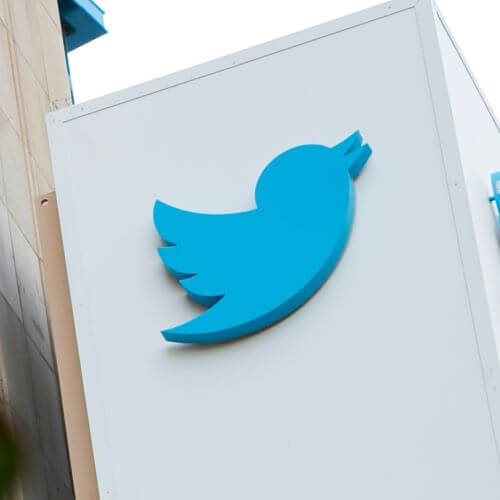A wave of job cuts is crashing into the tech sector
The tech sector has been on a hiring spree for years, but that all looks set to change amid the deepening economic gloom.

Elon Musk bought Twitter for the good of humanity, said the world's richest man not long before scrapping thousands of roles for humans at the sinking social media platform. If mainstream press reports are correct, about half of Twitter's employees have been released into the technology wild. They are likely to form a tiny percentage of those losing technology jobs this year and next.
Twitter employed only 7,500 people last December, after adding about 2,000 to the payroll in 2021. Alongside Big Tech companies and veterans of Silicon Valley, it is a tiny bird that makes a shrill noise, garnering attention as an online megaphone for celebrities and egotists and – more recently – because of Musk's takeover. Since 2015, Apple alone has recruited enough people to staff seven Twitters, if it so desired.
Figure 1:  Moneybags Elon Musk is said to have cut thousands of jobs at Twitter.
Moneybags Elon Musk is said to have cut thousands of jobs at Twitter.
(Source: Kristoffer Tripplaar/Alamy Stock Photo)
The iPhone maker is one of numerous technology companies that have been on a hiring spree for several years. As telecom operators have cut thousands of jobs, so their American suppliers and other US technology firms have been adding them. A random list comprising Big Tech players, chipmakers, traditional IT companies and telecom equipment vendors – all with US headquarters – has gained more than 210,000 employees since 2018 (see US companies besides Amazon in table below), despite cutbacks at several organizations. Include the country-sized Amazon and the increase since then is more than 1 million.
This looks set to go into reverse as fears mount of a worldwide recession next year. With inflation and interest rates on the march, company and household budgets are being squeezed. A unique set of geopolitical circumstances now grips the US semiconductor industry, which is being cut off from China, one of its biggest markets, just as Joe Biden's controversial CHIPS Act pumps $39 billion of government money into semiconductor production. Even before this egregious handout, experts had warned of a looming components glut. As prices fall and stock remains unsold, chipmakers are in for a belt-tightening 2023.
Wielding the axe
Blaming the "worsening economic conditions," Intel has already told investors it is looking for about $3 billion in cost savings next year. By the end of 2025, it aims to slash expenses by as much as $10 billion. This is a huge figure, equal to about 17% of Intel's overall sales and operating costs last year. The update came as Intel reported a 20% drop in sales for its recent third quarter and a massive 85% slump in net profit.
Intel's last big round of layoffs came in 2016 and 2017, when 4,600 jobs disappeared. Since then, it has added 18,400, finishing last year with about 121,100 employees. Outside the all-important research-and-development unit, where spending soared nearly a fifth last year, the outlook for staff is suddenly worrying.
2016 | 2017 | 2018 | 2019 | 2020 | 2021 | |
Amazon | 341,400 | 566,000 | 647,500 | 798,000 | 1,298,000 | 1,608,000 |
AMD | 8,200 | 8,900 | 10,100 | 11,400 | 12,600 | 15,500 |
Apple | 116,000 | 123,000 | 132,000 | 137,000 | 147,000 | 154,000 |
Broadcom | N/A | N/A | 15,000 | 19,000 | 21,000 | 20,000 |
Ciena | 5,555 | 5,737 | 6,013 | 6,383 | 7,032 | 7,241 |
Cisco | 73,700 | 72,900 | 74,200 | 75,900 | 79,500 | 83,300 |
Corning | 40,700 | 46,200 | 51,500 | 49,500 | 50,110 | 61,200 |
Dell | 138,000 | 145,000 | 157,000 | 165,000 | 158,000 | 133,000 |
-VMware | 20,000 | 22,000 | 24,000 | 31,000 | 34,000 | N/A |
Ericsson | 111,464 | 100,735 | 95,359 | 99,417 | 100,824 | 101,322 |
17,048 | 25,105 | 35,587 | 44,942 | 58,604 | 71,970 | |
72,053 | 80,110 | 98,771 | 118,899 | 135,301 | 156,500 | |
HPE | N/A | 66,000 | 60,000 | 61,600 | 59,400 | 60,400 |
Huawei | 180,000 | 180,000 | 188,000 | 194,000 | 196,600 | 195,000 |
IBM | 380,300 | 366,600 | 350,600 | 352,600 | 345,900 | 282,100 |
Intel | 106,000 | 102,700 | 107,400 | 110,800 | 110,600 | 121,100 |
Juniper Networks | 9,832 | 9,381 | 9,283 | 9,419 | 9,950 | 10,191 |
Marvell | 4,617 | 3,749 | 5,275 | 5,633 | 5,340 | 6,729 |
Microsoft | 124,000 | 131,000 | 144,000 | 163,000 | 181,000 | 221,000 |
Motorola Solutions | 14,000 | 15,000 | 16,000 | 17,000 | 18,000 | 18,700 |
Netflix | 4,700 | 5,500 | 7,100 | 8,600 | 9,400 | 11,300 |
Nokia | 102,687 | 101,731 | 103,083 | 98,322 | 92,039 | 87,927 |
Nvidia | 10,299 | 11,528 | 13,277 | 13,775 | 18,975 | 22,473 |
Qualcomm | 30,500 | 33,800 | 35,400 | 37,000 | 45,000 | 51,000 |
3,583 | 3,372 | 3,920 | 4,900 | 5,500 | 7,500 | |
VMware | N/A | N/A | N/A | N/A | N/A | 37,500 |
ZTE | 81,468 | 74,773 | 68,240 | 70,066 | 73,709 | 72,584 |
(Source: companies, SEC filings) |
Big Tech is either freezing recruitment or cutting jobs, too. Metaverse-obsessed Facebook spent $9.2 billion on research and development in the recent third quarter, a year-on-year increase of about 45%, in a desperate bid to cultivate a future business alternative to its ailing social media empire. As advertisers decamped, revenues fell 4%, year-on-year, to $27.7 billion, and net profit tumbled 52%, to roughly $4.4 billion.
After gaining another 13,366 employees last year, hiring 11,583 in the first six months of 2022 and reportedly adding about 3,500 since then, Facebook is now slamming the brakes on recruitment. Headcount in 2023 will be "roughly flat with current levels," said Dave Wehner, Facebook's chief financial officer, but press reports this week said large-scale layoffs were in the works.
Want to know more about 5G? Check out our dedicated 5G content channel here on Light Reading.
Similar messages of recruitment slowdown or layoffs have come from Amazon, Google and Microsoft, the giants of the public cloud. Given the size of its workforce, there is particular concern about Amazon, which would be unprofitable without AWS, its public-cloud business. Minus AWS, Amazon racked up a loss of $8.1 billion on sales of more than $306 billion for the first nine months of this year.
Any disruption in the public-cloud market could therefore have nasty ramifications for Amazon's other ventures and the hundreds of thousands of people who staff them. And workforce pruning already appears to have started at the biggest of Big Tech by employee numbers. Headcount had dropped from more than 1.6 million at the end of 2021 to about 1.5 million in September, according to mainstream press reports.
No safe haven
Smaller companies like Twitter, though, have made the deepest cuts so far. Lyft, a ride-hailing app that competes against Uber, last week said it would lay off nearly 13% of its workforce, or nearly 700 employees. In September, Snap revealed plans to cut its headcount by a fifth. Based on last year's numbers, that would equate to about 1,300 redundancies.
Twitter is conceivably doomed under Elon Musk's ownership. Cuts, he said, were prompted by dwindling revenues. Sales had already dipped 1% for the recent third quarter, to less than $1.18 billion, when Twitter also recorded a $270 million net loss. Various high-profile advertisers have reportedly quit the platform since Musk took charge. Whatever the public thinks of his free-speech mission, big brands seem to have been scared off by the rhetoric. The right to cause offense is not easily marketable.
Workforce shrinkage is a familiar trend for the telecom sector. AT&T and Verizon together have cut headcount by more than 138,000 employees since 2015 as they have sold underperforming assets and leant heavily on automation. Other telcos have been equally prepared to view some departments as an unnecessary cost burden. With technology companies doing likewise, the opportunities for a livelihood after telecom are drying up.
Related posts:
— Iain Morris, International Editor, Light Reading
About the Author(s)
You May Also Like












